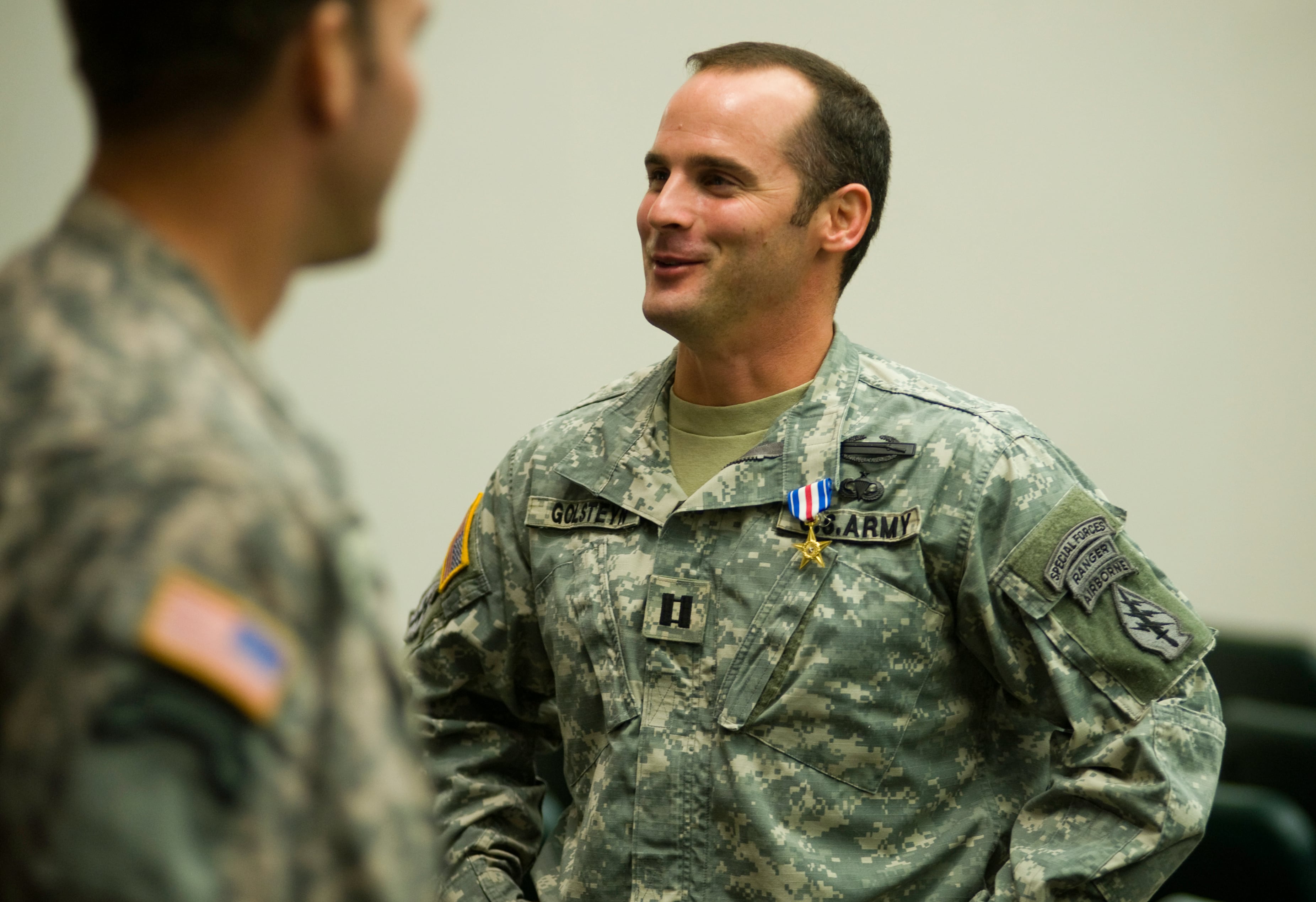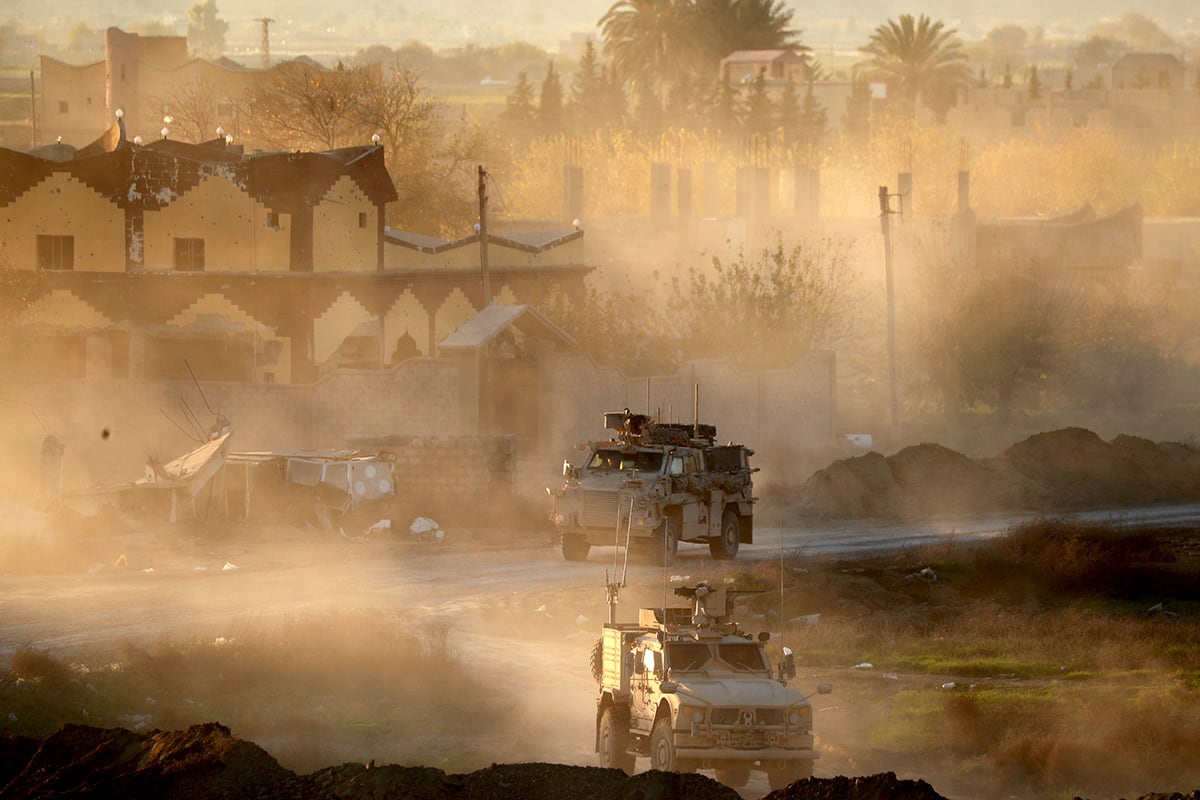The Army has issued a new 200-page handbook for general officers and judge advocates in the service as it looks to update a more than 60-year-old guide for ground-pounders that may find themselves wading through complex legalese.
The manual, called the Commander’s Handbook on the Law of Land Warfare, is a fraction of the Defense Department’s 1200-page Law of War manual and a necessary update to the 1956 volume it replaces, according to service leadership.
The manual is being incorporated into the curriculum for officer basic course students and classes for incoming commanders. The Army is also looking to incorporate the new manual at combat training centers like those at Fort Irwin, California, and Fort Polk, Louisiana, said Michael Meier, special assistant to the Army’s judge advocate general for law of war matters.
But it’s important for another reason, Meier noted.
“As we shift to sort of near peer and peer conflicts, legal advisers are not going to be with every decision-maker,” Meier said. “And this handbook is geared to empower those decision-makers to understand and apply the law of armed conflict in those contexts.”
Afghanistan, for instance, has been a relatively stagnant battle space for a long time. Launching and overseeing complex missions from the same forward operating base year after year may not be part of future military conflicts.
“Commanders, individual soldiers, Marines and certainly judge advocates have to understand the law of armed conflict to be effective in these diffused battlefields of the future,” he added.
The former manual, FM 27-10, was written the year after the United States ratified the 1949 Geneva Convention, which mostly dealt with the protection of civilians, the wounded and prisoners of war.
“I think the biggest concern is it was certainly outdated,” Meier said. “When it was drafted, it was very narrowly scoped. ... So in this intervening period, you’ve had multiple legal instruments that have been adopted.”
“It really did not get into the conduct of hostilities,” he noted.
It wasn’t until several decades later that additional provisions to the Geneva Convention addressed targeting and defined military objectives. The 1977 protocol, for instance, prohibited attacks on aircrew who are parachuting from an aircraft in distress, but it still allowed the targeting of paratroopers.
“This critical handbook will help Commanders fight and win on ‘battlefield next’ by helping to ensure our combat forces adhere to the spirit and letter of the law of war," Lt. Gen. Charles Pede, the Army’s top judge advocate, said in a statement. "This manual anticipates the complexities of modern battlefields and was written to be easily understood, enhancing compliance with the Law of Armed Conflict.”
Chapter 2 of the new manual defines and breaks down what constitutes a military objective, which is itself a treaty term synonymous with a “lawful target," the manual notes.
Concepts like distinction, proportionality and military necessity were taken out of the 1956 version of the manual, Meier said. “So we’ve inserted them back in and we’ve included definitions for what those are, how they’re applied,” he added.
Past manuals addressed medical facilities, but they focused on military hospitals rather than impartial humanitarian organizations, which are increasingly common in modern conflicts.
“After the Kunduz incident, the secretary of defense put out a memorandum talking about the principles that we will apply with respect to civilian humanitarian organizations like Doctors Without Borders, so we included the information from the SECDEF memo and put that into Chapter 4,” Meier noted.
Chapter 8 also includes guidance on how to report and investigate war crimes as well as some notable changes to the standards used to determine war crimes.
“One of the big aspects is the 1956 version had a statement in there that said ‘any violation of the law of armed conflict is a war crime,’ but that’s not the standard we use now," Meier said. “The Army field manual reflects the generally accepted standard that only serious violations of the law of armed conflict [LOAC] are war crimes.”
RELATED

War crimes have historically included all crimes during armed conflict, according to the new manual, which included offenses like espionage. Now, the concept is typically only used in reference to serious violations of LOAC, though other violations can still be subject to criminal prosecution under U.S. law.
Nation-states have a responsibility to search for and prosecute allegations of “grave breaches" of the Geneva Conventions.
According to the manual, that would include offenses like the taking of hostages; engaging in torture or inhuman treatment, such as biological experiments; unlawfully deporting, transferring, or confining a protected person; and causing extensive destruction or appropriation of property, not justified by military necessity.
The manual also breaks down various other LOAC violations — such as the maltreatment of dead bodies — that are punishable and may be serious enough to merit characterization as “war crimes.”
While the manual was distributed in hard copy to general officers and JAGs, the document is also free to download online and print or store in electronic form downrange.
Kyle Rempfer was an editor and reporter who has covered combat operations, criminal cases, foreign military assistance and training accidents. Before entering journalism, Kyle served in U.S. Air Force Special Tactics and deployed in 2014 to Paktika Province, Afghanistan, and Baghdad, Iraq.





